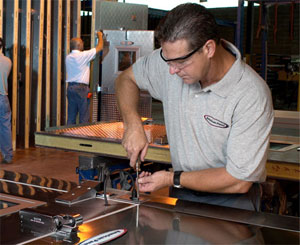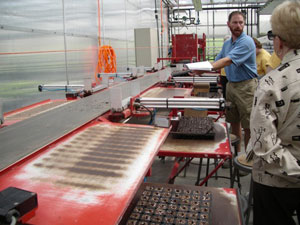Assembler (Metal Goods)
Tasks & duties

Metal goods assemblers may do some or all of the following:
-
position the parts to be assembled
-
punch or drill holes in the parts
-
put the parts together in order
-
join the parts together with bolts, rivets, clips or screws, or by welding
-
finish the product by filing, grinding or sanding
-
make some of the parts to be assembled
-
cut lengths of pipes and other components
-
operate industrial robots
Skills & knowledge

Metal goods assemblers need to have:
-
knowledge of metals and welding production processes
-
ability to interpret drawings
-
maths skills for basic calculation and measuring
-
practical skills
-
knowledge of safety rules and procedures
-
problem-solving skills
-
communication and listening skills
-
record-keeping skills
Entry requirements
There are no specific entry requirements to become a metal goods assembler as skills are gained on the job.
Secondary education
There are no specific secondary educational requirements but science, English, maths and workshop technology may be useful.
Training on the job
Metal goods assemblers can complete an apprenticeship and gain a National Certificate in Manufacturing and Mechanical Engineering, or Manufacturing (Metal and Related Products). For more information about apprenticeships contact Competenz.
Metal goods assembler apprenticeships are part of the Modern Apprenticeships scheme, which is for people aged 16 to 21. For further information visit the Modern Apprenticeships website.
Useful experience
Useful experience for metal goods assemblers includes work using hand tools, or welding and assembling vehicles. NZQA and other related courses are also helpful for gaining greater knowledge of the metal goods field.
Related courses
Boiler-making and Welding
Manufacturing Engineering
Mechanical Engineering
Metal Fitting, Turning and Machining
Sheetmetal Working
For more information, please refer to Career Services.
Document Actions
